Converting DC (direct current) to AC (alternating current) has played a major role in the transition toward renewable energy.
DC to AC power converter is essential if you want to use electricity from:
- Solar batteries
- Solar panels
- Domestic wind turbines
- Car or RV batteries
On the one hand, these systems named above mostly produce, store and use DC electricity, on the other hand, the international standard for electrical devices and home appliances is AC electricity.
Therefore, there is a need for a efficient DC to AC power converters both for domestic and industrial use.
In our article, you will find everything you need to know about DC to AC converters.
First, we will explain what DC and AC are, then we will move along to answer the question: Is AC better than DC?
Secondly, we will look how to convert DC into AC via an inverter. Finally, we will describe what appliances you could run without converting DC to AC.
What is AC and DC?
To understand why AC was adopted as an international standard let’s us first explain what AC and DC are.
What is DC?
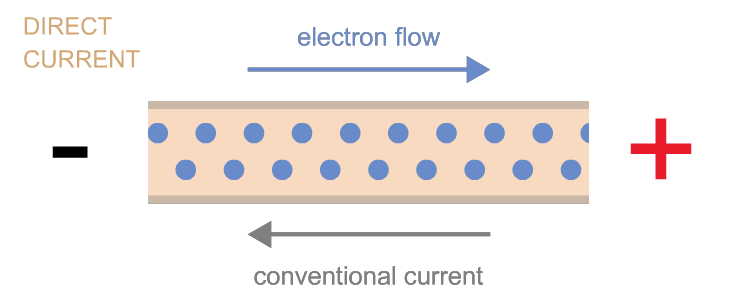
DC stands for Direct Current. As it is named, in DC, the current flows in one direction. The electrons are flowing from the negative pole to the positive.
On a graph, it could be represented by a continuous straight line.
DC electricity can be produced by solar panels for example, and stored in batteries which also deliver DC electricity.
What is AC?
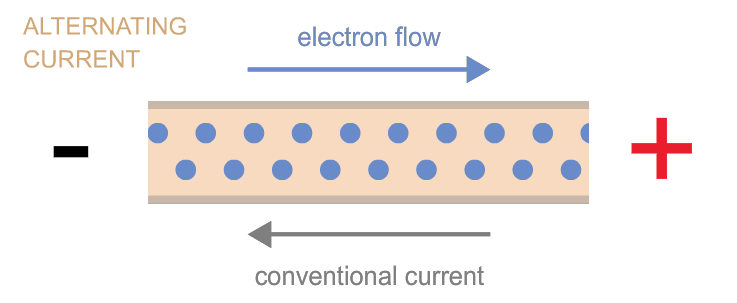
AC stands for Alternating Current. As it is named, in AC, the current flows alternatively in both directions at a standard frequency of 60Hz. Meaning to say the current changes direction 60 times per second.
On a graph, it could be represented by a wave.
AC electricity is produced by an alternator in nuclear, hydroelectric, coal and gas power plants for example. AS an international standard, AC is used in all home appliances and electric machines.
Now that you know what AC and DC is, let’s compare both of them and see what is best.
AC vs DC – What is best?
Westinghouse and Tesla were able to demonstrate the superiority of AC electricity compared to the earlier established DC electricity from Thomas Edison.
Let’s have a closer look at the positives and negatives of both electric currents.
Pros and Cons of DC
One of the main advantages of DC electricity is that it is easier to store than AC. In addition, DC motors and appliances are more efficient. For example, a DC water pump could be two times more efficient than an AC model with the same wattage.
DC plays a major role in renewable energies and electric vehicles. Indeed, it can be directly produced by solar panels and stored in batteries.
This is quite ironic for Tesla company, which mainly rely on DC power but uses the name of the great advocate of AC electricity.
Another noticeable fact is that all electronic equipment operates under DC and the conversion of AC to DC results in 5 to 20% loose to power your laptop, cellphone and other electronic devices.
Finally, although both electric currents are dangerous, AC is more likely to cause heart fibrillation and death.
Pros and Cons of AC
The main advantage of AC is its capacity to be transported over long distance with minimal energy loose (the wire will not overheat). Therefore, reducing the size of the wires and the cost of energy transmission.
It is also cheaper to produce AC from an alternator compared to DC.
Although AC is the main electric current, DC is still widely used and with the rise of renewables, batteries and electronic devices it is expected to regain in popularity in the coming years.
Therefore, there is a need to convert DC to AC efficiently to power our common appliances at home.Today, most of the electrical appliances we use at home run on alternating current (AC), such as TVs, refrigerators, washing machines, vacuum cleaners and air conditioners.
In the following section, we will see how inverters convert DC to AC.
How to convert DC to AC – the inverter
The inverter is the electronic device that converts DC to AC in a two steps process:
First of all, it turns DC into AC, then it increases the input voltage (12V, 24V…) to reach an output of 230V usable by all appliances.
Convert DC to AC
There are two types of inverters:
- Modified sine-wave (MSW)
- Pure sine wave (PSW)
To find more about pure sine wave inverters, have a look at this article.
The challenge of converting DC to AC is to turn a straight signal into an alternating wave with minimal loss.
To do that, we could start with a simple switch, that alternatively turns ON and OFF the DC straight line. So now, we have an alternating signal, but the current is still flowing in one direction and we are far from the wave of AC.
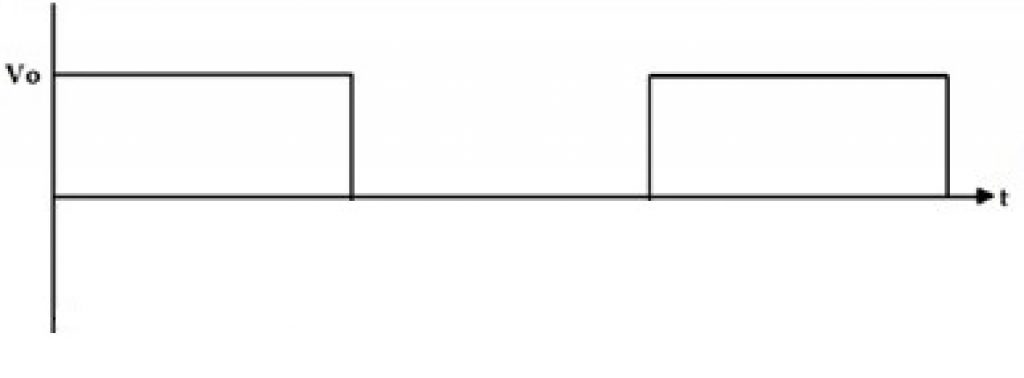
To make the current flow in both directions, inverters are using transistors. Transistors are electronic switches. To put it in a simple way, inverters are using a 4-way switching bridge of transistors to re-route the direct current to alternate it at a set frequency through the load.
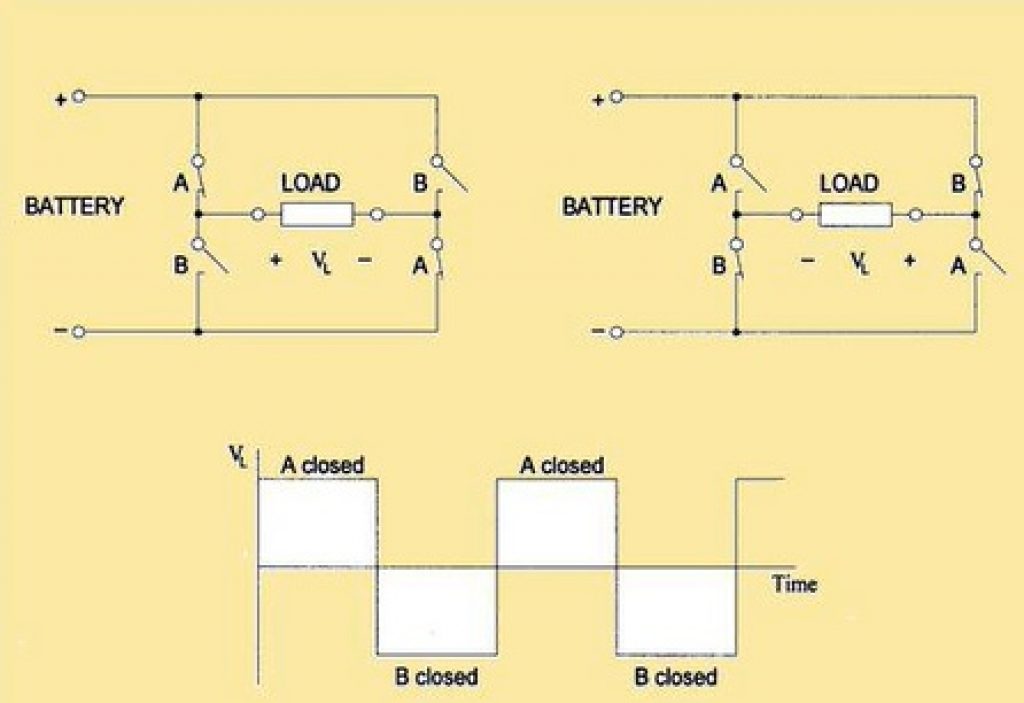
Now we have an alternating current. To transform it into a wave, inverters are using diodes and other electronic components that smoothen the signal to reach a pure sine wave.
Modified sine-wave inverters, will only produce an approximation of a sine wave as illustrated below. Pure sine-wave inverters will create a perfect sine-wave similar to the utility electricity.
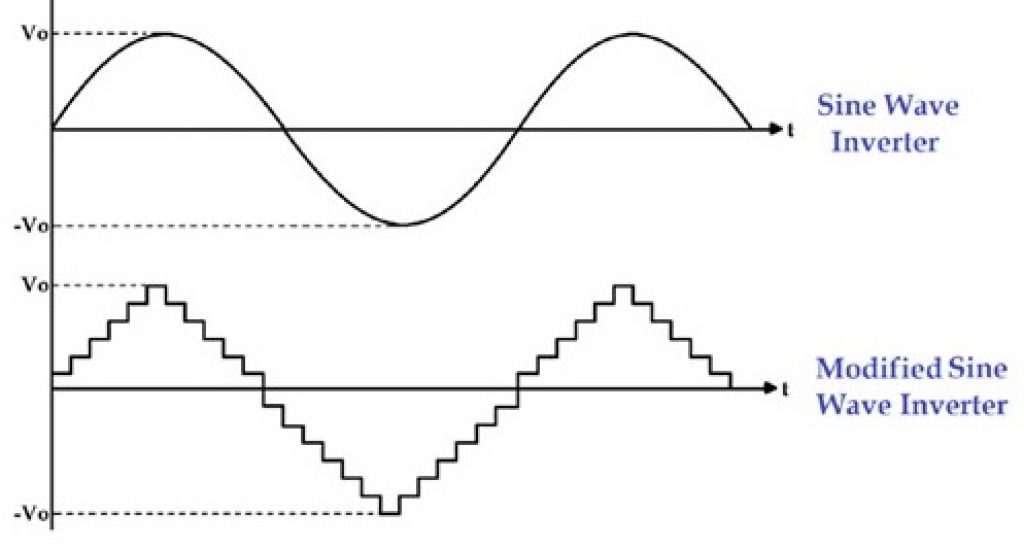
Pure sine wave inverters like the ones Bluetti uses in their solar generators, are using high quality electronic components. Therefore they are more expensive than modified sine wave.
Step-up the voltage to 230V AC: the transformer
Usually, DC voltage is lower than the 230V AC voltage required by our appliances. Consequently, the voltage needs to be increased. That’s the role of the built-in transformer.
Basically, transformers are made of an iron core, with two coils of copper wire: the primary and secondary circuits. The lower voltage current enters through the primary coil and the higher voltage current flows out of the secondary coil. The current passes from one coil to the other through electromagnetic induction.
The wiring density of the two coils controls the output voltage. To increase the voltage, the secondary coil needs a higher wiring density than the primary one.

Alright, now that you know how to convert DC into AC, let’s see in what situation you would need a DC to AC converter.
When do you need a DC to AC inverter?
Every day we are using inverters, they are everywhere.
When you charge your phone or laptop through the wall plug, you are using a micro-inverter (from AC to DC) because electronic devices only work with DC.
Solar panels and batteries are a source of DC electricity. Therefore, you will need a DC to AC converter if you’d like to connect your regular appliances.
That said, many appliances have been designed to work only with DC. Therefore, eliminating the need of a converter when your source of energy is only DC such as in a camper van or in an off-grid system.
What can your run with DC?
DC appliances save money!
As previously mentioned, there are many advantages of using direct current and one of the main being its high efficiency compared to AC. Appliances running only on DC require less power to run.
As an example, a 500W water pump running on DC, will run the same as a 1000W AC water pump.
Therefore, many appliances have been developed to run on DC only, you could find:
- Refrigerator/freezer
- Electric fan
- Electric pump
- LED TV
- Cooker
With the development of solar energy and local production of electricity, it is expected that DC will play a larger role in our power systems.
Final thoughts
You might already know that we are living in an energy transition from a fossil fuel-based to a zero-carbon economy. Electricity is playing a major role in this energy transformation.
Indeed, global electricity consumption increased by 40% in the last 10 years. In addition, it is expected that the global electricity demand will be very strong within the next 20 years, growing two times faster than primary energy demand.
Electric vehicles (EV) with batteries, renewable energy production systems (solar, wind) are the biggest contributors to the growth of electricity use.
All of them are using DC electricity which can be up to two times more efficient than AC.
Consequently, in the near term, DC power will certainly regain in popularity in micro-grid systems.
In the meantime, DC and AC systems will still cohabits with DC to AC converters playing a major role.







































































